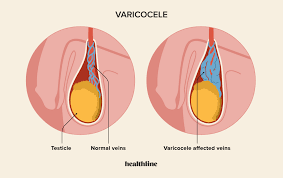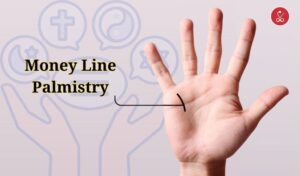
Introduction: Fitness Goals vs. Health Concerns
Gym culture is thriving. From weightlifting to HIIT workouts, more people are dedicating their time and energy to staying fit. While fitness has numerous benefits, some men are concerned about whether heavy lifting or intense workouts can cause or worsen varicocele, a condition affecting veins in the scrotum.
So, is there a real link between working out and varicocele, or is it just another fitness myth? In this detailed guide, we’ll explore what varicocele is, the role physical activity plays, what the science says, and how to protect your reproductive health while staying active.
What is Varicocele?
Varicocele is a condition where the veins inside the scrotum become enlarged, similar to varicose veins in the legs. It typically affects the pampiniform plexus, a network of veins that helps cool blood before it reaches the testicles — essential for healthy sperm production.
Common Symptoms of Varicocele:
-
Dull or aching pain in the testicle
-
Heaviness in the scrotum
-
Visible or palpable enlarged veins
-
Shrinking of the affected testicle (in severe cases)
-
Infertility or reduced sperm quality
Varicocele is a relatively common condition, affecting nearly 15% of adult men and up to 40% of men dealing with infertility.
What Causes Varicocele?
While the exact cause is not always known, medical experts suggest that varicoceles are primarily caused by malfunctioning valves in the veins within the spermatic cord. These valves fail to regulate blood flow, leading to pooling and vein dilation.
Risk Factors:
-
Genetics
-
Taller body height
-
Obesity
-
Standing or sitting for long hours
-
Heavy physical exertion (this is where the gym comes into play)
Gym Workouts and Varicocele: Is There a Connection?
Let’s address the question head-on: Can hitting the gym cause or worsen varicocele?
The Short Answer:
No, going to the gym doesn’t directly cause varicocele. However, certain gym activities — particularly heavy weightlifting or exercises that put excessive pressure on the abdominal and pelvic regions — can aggravate an existing varicocele or increase the risk in predisposed individuals.
Here’s Why:
During intense workouts, especially those involving:
-
Deadlifts
-
Squats
-
Leg presses
-
Overhead lifts
the intra-abdominal pressure spikes. This pressure can obstruct the normal flow of blood in the testicular veins, worsening venous pooling, and eventually dilating the veins.
If you already have a minor varicocele, such stress could make it more noticeable or painful.
Scientific Evidence: What Studies Say
While direct studies linking gym workouts to varicocele development are limited, some research provides insight into contributing factors:
-
A study published in Urology Annals found that chronic increases in intra-abdominal pressure could impact venous return from the testicles, possibly contributing to varicocele progression.
-
Long-term strenuous activity has been observed in professions involving weightlifting or heavy manual labor as a non-primary but significant factor in varicocele cases.
So while the gym isn’t the cause, poor technique or excessive intensity might be the trigger in some individuals.
When Gym Becomes a Risk Factor
Certain workout habits are more likely to increase varicocele risk or discomfort:
1. Poor Breathing Technique
Holding your breath during lifts (the Valsalva maneuver) raises intra-abdominal pressure significantly, placing strain on testicular veins.
2. No Recovery Time
Overtraining without giving the body time to recover can worsen inflammation and vein health.
3. Ignoring Core Strength
Weak core muscles may shift excessive pressure to the pelvic region during heavy lifting.
Safe Gym Practices to Prevent or Manage Varicocele
Don’t worry — you don’t have to quit the gym to prevent varicocele. Here are smart ways to stay fit without compromising your reproductive health:
✅ 1. Use Proper Lifting Technique
Focus on posture, breathing, and form. Avoid breath-holding and always exhale on exertion.
✅ 2. Train Smart, Not Heavy
Choose moderate weights and higher reps instead of maximal loads that strain your core.
✅ 3. Focus on Core Strength
A strong core stabilizes the body and reduces pelvic pressure during compound movements.
✅ 4. Mix in Cardio
Incorporating cardiovascular exercises like swimming or cycling helps improve venous return and overall circulation.
✅ 5. Wear Supportive Garments
Compression underwear or jockstraps can support the scrotum during workouts and reduce discomfort.
✅ 6. Stay Hydrated & Anti-Inflammatory
Proper hydration and a diet rich in anti-inflammatory foods help maintain vascular health.
Can Varicocele Be Reversed?
While mild varicocele may not need any treatment, in more advanced or painful cases, medical or surgical intervention may be necessary. Options include:
🔹 Conservative Treatment:
-
Scrotal support
-
Anti-inflammatory medications
-
Lifestyle changes
🔹 Medical Interventions:
-
Varicocelectomy: A surgical procedure to tie off affected veins.
-
Varicocele embolization: A minimally invasive alternative using coils to block the affected vein (offered at FlowCare India).
Explore expert care options like varicocele treatment at FlowCare to address pain or fertility concerns.
Signs You Should See a Doctor
While some varicoceles are asymptomatic, others might require medical attention. Consult a healthcare provider if you experience:
-
Persistent pain or heaviness in the scrotum
-
Noticeable swelling or lump in the testicles
-
Fertility issues or low sperm count
-
Discomfort during or after workouts
Real Stories: When Gym Lovers Discovered Their Varicocele
Arjun’s Story:
“I’ve been lifting weights for years, but last year I noticed a dull ache after leg day. A quick ultrasound confirmed a grade 2 varicocele. My urologist said my technique might be to blame. I adjusted my workout, added pelvic stretches, and it’s manageable now.”
Rohan’s Experience:
“I was into bodybuilding, pushing heavy weights five times a week. One day, I felt something like a ‘bag of worms’ in my scrotum. I thought it was a hernia! Turned out to be a varicocele. I went in for embolization, and now I’m back to working out, smarter than ever.”
Busting Common Myths
| Myth | Fact |
|---|---|
| Lifting weights causes varicocele | It may worsen it, not cause it |
| Only older men get varicocele | It’s most common in teen and young adult males |
| You can always feel it | Many varicoceles are asymptomatic and only detected via ultrasound |
| Surgery is always needed | Not always; mild cases can be managed conservatively |
Conclusion: Be Strong, Be Smart
Going to the gym is one of the best things you can do for your body — but understanding its impact on vascular health is key. While working out doesn’t directly cause varicocele, improper technique and overexertion can exacerbate or reveal an underlying issue.
Listen to your body, train with awareness, and seek professional help if you suspect something isn’t right. With balanced training and preventive care, you can maintain both physical fitness and reproductive health.





